Blog Blog Day 1 – June 25, 2018 Blog Day 2 – June 26, 2018 Blog Day 3 – June 27, 2018 Blog Day 4 – June 28, 2018 Blog Day 5 – June 29, 2018 Blog Day 6 – June 30, 2018 Blog Day 7 – July 1, 2018 Blog Day 8 – July 2, Read More ...

ICRPS 2018 Summer Institute | Tuskegee, AL | June 24-July 07
"Social Justice, Rural and Natural Resource Policy"
Written by: Folashade Adalumo Ntam, Lucy Asare-Baah, & Donna Davis
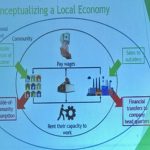
The morning session started with two presentations about Rural, Community and Economic Development and Strategic Planning. We were introduced to two developmental models, the people and place-based policy while focusing on rural areas in the South and how politics, history, social and economic dynamics of the South have impacted the region. Rural places make up less than 30% of the US hence these areas have had less benefit and less voice in shaping national policies compared to urban areas. From a historical economic perspective, agriculture has been the major driver with labor and skill offered cheaply by enslaved Africans and later shifting the African Americans into low cost, low skill labor manufacturing – thus successfully maintaining persistent poverty in the region since 1930. To help reduce this problem, government needs to create policies that are more people based in order to develop the individual by developing the skill set of rural America. Also, we were encouraged to take advantage of the global economy; produce locally and ship the goods across to the buyer and make a decent income.
While people-based policy focuses on residents that live there, place-base focuses on physical infrastructure and has historically been the policy adopted more in the US. With a top-down government structured approach, commissions such as the Appalachian, Denali, and Southeast Crescent lag behind where development based who and where decisions are made. The major cause of poverty comes from lack of adequate (effective) policy. Next, we discussed the topic of rural development and the numerous programs offered that are directed to individuals such as the homeownership and community facilities building. Programs in renewable energy systems, telecommunication, and broadband funding were also introduced. Noteworthy is the telemedicine grant which helps rural communities connect teacher, student and medical providers over distances. The rural development offices are in four regions (western region, north-central, northeast and southern) with 47 state offices and 400 area offices.
The part two of the strategic planning topic was a discussion of the type of development initiatives and programs. We looked into the enterprise zones and how these transitioned into opportunity zones. Next, we learnt that program participation Canada is highly impacted by distance and density which has influence on rurality. Accordingly, changes in the rural communities occurred with events that led to national building with rural as a resource bank; interventions with top down policies between 1950- 1980; reconstructing with neoliberalism and industrial flexibility between 1980 -2009; and lastly a negation period of winners and losers in post 2009. Local economic development and entrepreneurship relied on series of federal initiatives, hence the creation of jobs seizes as subsidies run out. Community futures Program (CFP) was needed at this time when LIP, LEAP and LEDA which depended on federal support had to be replaced with new strategy that is more community based with local priorities and community control. Thus, CFP started in 1985, private incorporated, not for profit organization and led by the community-based governance boards with key activities centered around business financing, business information and services, community strategic planning and CED projects and partnerships. There are 269 Community Futures in Canada in nearly all provinces and territories while targeting rural and northern communities. CFP has positively impacted these communities since information is available to the communities with respect to funds available for development and how funds are disbursed.
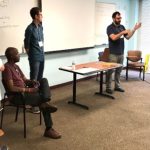
Then the third presenter took us across the ocean and there we saw that Europe has a large diversity rural development policy and is funded through the European agriculture fund for rural development with six priorities with fostering knowledge and innovation and promoting resources social inclusion as examples. It was implemented at local level by local communities to promote clear and transparent procedure. Also, cooperation, networking facilitating innovation and area based local development strategy are examples of features looked at with a bottom-up approach (unlike the US opportunity Zone which is a top-bottom approach with little or no community involvement in the decision making process).
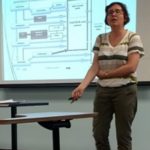
The afternoon session under the topic Agriculture Food Policies and Food Security, had two informative presentations. The first gave an enlightening video clip on food waste; definitions and differences between Loss (production) and Waste (throw away); and suggested some of the Loss/Waste potentials from production and harvest process through the consumption and restaurant phases. A high amount of food waste comes from the consumer – with a general lack of knowledge by the consumer and government food and safety regulation policies compounding the outcomes. Also of significance is the loss/waste of natural resources with unconsumed food including water, land use, the carbon footprint for fuel/pesticides/fertilizers, and operator money. This represents just the tip of the iceberg!
The next speaker presented the European Food Banks Federation (FEBA) program and it growing overall efforts to focus on food security while building capacity to adapt to new situations. While increasing operations and efforts in both the US and the UK, the FEBA is also continuing to focus on the importance to serve as co-operator; to continually improve fresh products; and to focus and continue to work with local social services for efficiency.

During the break Tuskegee students conducted ICRPS recording-clips and provided photo opportunities with some happy blog writers (as shown on the right).
ICRPS doesn’t only teach participants about book knowledge, they extend beyond that by providing hands-on demonstration of what is being taught in the classroom. After class we visited the Global Center for Post-harvest and Food Processing at Tuskegee University where ICRPS participants were engaged and exchanged information about the live and ongoing demonstrations and research. The TU post-harvest was established base on research within the US and Africa by faculty from the College of Agriculture to build TU’s long term capacity in post-harvest and food processing technology to help limited resource farmers in the Southeastern region of the US reduce farm loss. Food loss is more predominant in the developing world while food waste is more of a challenge in the developed countries from retail to consumption on the supply chain. The highest farm loss (46%) experienced by local farmers in the black belt is as a result of drought, but it is important for these farmers to understand cost benefit analysis if they have an idea of what their losses are and how best these farmers can add value to their left over farm produce.

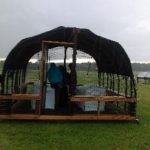

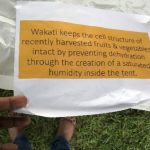
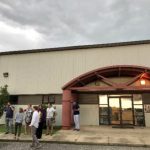
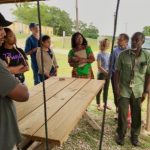
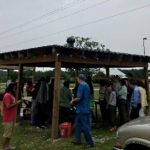
A little ‘hoops’ to finish the day by our energetic 2018 classmates!

(Picture by Ana Paola)